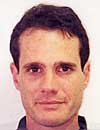Global Sport
Matt Cronin


I was not sure exactly what to expect when, for the first time, I traveled to Istanbul for the WTA Championships, and then to Prague for the Fed Cup final between the Czech Republic and Serbia in late October.
From afar, both cities fascinated me so I was pretty sure that as a standard tourist I would be more than pleased. Which was true and both cities are highly recommended.
But I wasn't so sure that the tennis would be as satisfying as the tourism. I have now reached triple digits in the number of tournaments that I've covered live, so my bar for a successful event is high.

Yet both events passed the test with more than flying colors—even exceeding many larger events in several ways. That was not just because the working conditions for the media were outstanding. (Believe me that influences my perception of a tournament, as it would anyone working on any job site in any capacity.)
It was mainly because the energy level of the crowds was extremely high, inspiring the players and helping raise the level of tennis to great heights. The feeling was very different from many larger events on the world tour, where the stands are rarely full and the audiences often seem disinterested.
As a fulltime US tennis journalist (and there are very few of us left) who is also a social media participant I have the benefit – or is that the burden? – of hearing a variety of people's opinion on whatever competition is going on.
What I hear—mainly from Americans--is a lot of "nobody cares." But what is overlooked is the fact that there are actually thousands upon thousands of enthusiasts who live in non-English speaking countries who will, given the chance, actually attend and pay close attention to tournaments that take place on their soil.
At the WTA Championships in Turkey, the Sinan Erdem Dome sold out every night except for the first one, and that was a near sell-out. Meanwhile the Fed Cup Final in Prague's O2 arena essentially sold out every day.
These are large arenas and they were packed. They were loud, and they were enthusiastic.

The contrast was quite dramatic compared to the Masters events and the Slams where you look around the stands and see people chatting or on the dreaded mobile devices for a significant percentage of the overall match time.
But in Istanbul and Prague, every moment a tennis ball was in play seemed to capture the attention of every spectator. It almost felt like a different sport. It felt like pro tennis was alive in a new way, with a bright and vital future.
This was true in Turkey, a country that does not have a long tennis tradition. It was true in the Czech Republic which does, with champions from Jarslov Drobny to Martina Navratilova to Hana Mandlikova to Ivan Lendl and Miroslav Mecir.
The experience completely undermined the common argument that the WTA Championships should always be played in major city with a first world economy (like New York or London). It did the same to the argument that the Fed Cup finals should be played in neutral city every two years with a variety of teams involved.
Neither of those options will ever recreate the fantastic experience of the fans and the players I observed in Istanbul or Prague. Places like New York and London already have major tournaments (tiny ones like Wimbledon and the US Open…) and do not necessarily need another major event to boost the popularity of the sport.
Because tennis is so popular in England, it can actual host a number of tournaments that all do very well (the ATP World Finals in London, which was played the week after the Fed Cup final, once against set attendance records). And the US Open sets new attendance marks annually.

But does the apparent success of pro tennis in those markets mean that the sport is really growing and that more events in big media markets are the best thing for the game?
Look at the death of Barry MacKay's old San Jose tournament. After years of seeing the world's best players like John McEnroe, Pete Sampras and Andre Agassi, the new tournament management was never unable to attract the current top pros—despite the repeated promises.
Spoiled Bay Area fans became blasé. Many abandoned the event for a road trip to Indian Wells with all the top players, both men and women, more matches, much better facilities and great spring desert weather.
But how many smaller cities in the rest of the world might have embraced the San Jose event with the kind of enthusiasm I witnessed in Istanbul or Prague? And how would that exposure ultimately impact the growth of the game?
That may be exactly the kind of grass roots experience tennis needs most. Let's face it, the sport is far more impressive from the stands than on television.
I feel certain when a tournament is played in a locale like the ambitious sports city of Istanbul, part European, part Asian, part Muslim--and bidding for the 2020 Olympics--the chances of attracting new and permanent fans to the sport can only increase.
And the same can be said about Fed Cup. Petra Kvitova and Lucie Safarova led the Czech Fed Cup team to the final for the second straight year in Prague, a city that does not have a WTA event. This time they won the title in front of their country's fans.

You could see on the faces of the players that this was very different than winning on the main tour. And the excitement of the occasion to those in attendance may stick with them for lifetime.
One of the things that both the Turkish and Czech Tennis Federation did so smartly was to put enough low-priced tickets on sale that seats were accessible to the general population.
Unlike so many events we see on television, there were never large, empty craters of seat. In my opinion another six dozen tournaments worldwide might want to heed that approach.
During both events, I decided to go and sit in the upper decks so I could get a feel for how much people were enjoying the actual matches – not just the entertainment value of being at a big event.
In Istanbul, I sat in between two Turkish families during Maria Sharapova's three-plus hour victory of Agnieszka Radwanska. It was clear that the parents in both families were both already fans as they kept telling the kids not to yell out during points. (Imagine that the kids actually were so interested they wanted to!)

It also became increasingly clear as the match grew tighter that the kids were developing a better understanding of the dynamics of the sport, and were even more transfixed by the points.
At the Fed Cup in Prague, I sat near a large group of Czech fans with bull horns during Kvitova's first day victory over Jelena Jankovic. Those fans became deliriously happy when Kvitova hit a winner or won a log and physical point, sending gale force winds through their horns which was amazing-- if unfortunate for my ears.
The next day, I scooted over to the Serbian side to get a feel for why so many Serbs were willing to make the 560 mile drive from Belgrade. I saw and heard just how excited they were when their national superstar, former No. 1 Ana Ivanovic, played one of her best matches in the past five years. They were drunk with joy.
Later I mentioned the experience to Ivanovic. With a chuckle she noted Serbian fans could be a little crazy. She also said that seeing hundreds make the trek to see Fed Cup showed her that women's tennis could make serious inroads in the male dominated world of Serbian sports--if fans simply had more opportunities to see the players in person.

Meanwhile, back in the WTA final in Istanbul, Serena Williams ended up defeating Maria Sharapova for the title. Both icons were impressed by the real global nature of the sport, noting how pleased they were to hear large groups of fans pulling for them when, obviously, neither was a native and only Sharapova had ever set foot in Istanbul before.
A week later in Prague, Lucie Safarova became a national heroine by clinching the Fed Cup tie for the Czechs with a win over Jelena Jankovic. Safarova called it one of the highlights of her career because she was able to win on front of "my people."
Almost everyone in attendance at the Fed Cup stayed for a half hour during the trophy presentation ceremony. As it had in Istanbul, pro tennis really mattered that day in Prague, regardless about what some say of its relevance stateside.
Is there a lesson here from these two great events for one of the world's few truly global sports? I would say yes.






